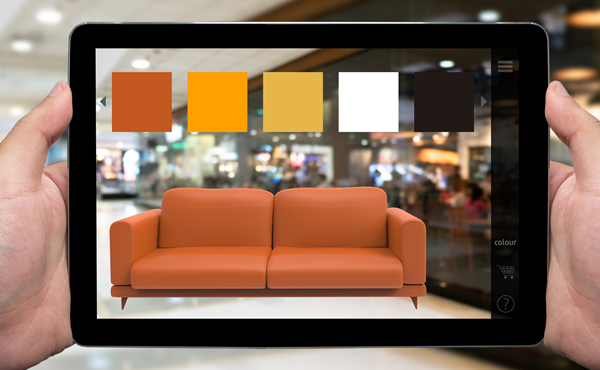The pandemic has had a monumental impact on the ecommerce industry, instigating a rapid-fire change in consumer behaviour. Bricks and mortar shopping experiences have been replaced with a digital shopping landscape, with more than two billion online shoppers scouring the internet globally for their next purchase.
Consumers are enthusiastically buying into the convenience of online shopping, but on the flip side, they are facing the challenge of a limited understanding of their purchase through a lack of product visibility online.
Today there are an estimated 24 million ecommerce sites across the globe and it is forecasted that by 2040 nearly 95 per cent of all purchases globally will be made online or through a digital platform. Business owners find themselves in a situation where competition is increasing faster than the market is expanding and drop-shipping is gaining huge traction. It is now more and more difficult to stand out in an overly saturated market.
This change in buying behaviour along with the rising demand for short-form video has revealed that marketing tactics need to be redefined to be about immersive, customer-centric content, not just disruptive messages. TikTok’s monumental success can be attributed to its ability to allow brands to inspire their fans in authentic and entertaining ways and that’s what consumers want—genuine connections with authentic brands.
“The writing is on the wall and it’s telling us that to stay front-of-mind in audiences of the future, brands need to up their game in terms of creative storytelling and the representation of their ethos,” says co-founder and CEO of video-based platform, Tolstoy, Dov Kaufmann.
“The globally minded audiences of tomorrow demand more complexity, more authenticity and more transparency. Marketing tactics like interactive and shoppable videos can channel the desire for authenticity and help businesses build the valuable connections they need to succeed and stand out from their competitors.
“Marketing in 2023 is poised to be about making the shopping experience more fun, convenient and meaningful.”
So, what marketing tactics can we expect to see in 2023?
Shoppable videos
With over 82 per cent of all consumer online traffic spent viewing video content, businesses are realising the tremendous potential of this incredibly effective tool. Shoppable video is rapidly transforming the ecommerce storefront by capturing an audience’s attention with an experience as immersive as TikTok, with eye-catching product videos to show how their products look in real life, on real people.
Videos can be embedded in ecommerce sites, sent via SMS and email or displayed as stories, a carousel or widget, enabling users to scroll through videos to view products and buy directly from the videos with ‘add to cart’ or ‘shop now’ buttons.
Interactive videos
Shoppers of all ages now turn to their devices to make purchases. Interactive videos are a highly effective marketing tool that allows brands to send users on a unique journey where there’s more of a person-to-person conversation or personal experience. This allows brands to share their recommendations or founder story, announce a new collection and gain their audience’s attention, interest, and overall, their trust.
It also offers viewers the opportunity to ask questions or see and interact with the products they’re interested in. This not only saves brands in costs and time, but it provides them with more targeted leads.
Product demonstrations
Interactive product demonstrations allow potential customers to experience a product and all its features through a self-guided, clickable process. By providing each customer with the opportunity of a personalised demonstration, they’re able to view the product in a way that interests them, thus avoiding unnecessary information and potentially boring the customer.
A product demonstration can be as complex as allowing a customer to explore the intricacies of an engine or as simple as displaying different clothing items on different models with different body types.
Virtual reality
Virtual reality (VR) marketing incorporates the full immersion of a customer into a virtual world. This can connect a customer with a brand or product by engaging a variety of the customer’s senses, encouraging more interaction.
VR allows brands to create and imbed memorable experiences as well as bring an entertainment factor to advertising. This is more immersive than a customer scrolling down a static catalogue and encourages visitors to spend more time viewing the products, interacting with the brand and ultimately increasing the chance of sales.
Competitions and games
Competitions and games are prize-driven strategies that encourage people to participate and engage with a brand in the hopes of a reward. This marketing tactic can help a business obtain multiple goals such as increasing brand awareness, encouraging customer loyalty, increasing sales, and obtaining customer information with little effort. Not only are people more than willing to share their details when it comes to entering competitions and playing games, but they will also share achievements around social platforms which can further boost awareness.
With more and more people spending time at home and working remotely, the demand for and consumption of authentic storytelling and genuine connections with brands has—and will continue—to accelerate. Brands are optimally positioned to embrace technology like shoppable videos to meet their customers’ need for an immersive, personalised online experience.







